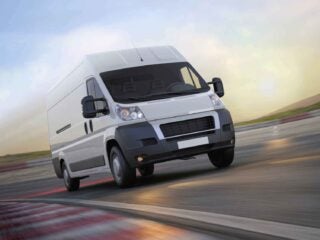- Resources
- Transportation Solutions
Resources
Transportation Solutions
Published: November 16, 2019 by EDF Staff
Shopping has never been easier. With a click of a button, consumers can have a product in a matter of hours. The average number of daily deliveries to households in New York City alone tripled to more than 1.1 million shipments from 2009 to 2017. And, U.S. shopping is expected to $1 billion a day during the 2019 holiday season.
Last-mile delivery , the final step in the increasingly competitive process of moving items to stores and customers’ homes as quickly as possible , is adding costs beyond the price tag. Growing demand for deliveries is contributing to increased congestion and more fossil fuel-powered trucks on the roads.
As a result, cities and campuses such as universities are encouraging alternatives to fossil-fuel vehicles. In Europe, zero-emissions zones that don’t go into effect until 2025 are already upending corporate practice. According to an MIT study, young people are in favor of greener delivery options: 50% of shoppers are concerned about implications of the delivery. Etsy, after realizing that shipping is responsible for 98% of their carbon impact, announced zero emissions shipping.
Luckily, zero-emissions last mile delivery is already possible:
- IKEA has committed to zero-emissions home delivery and has already achieved this in Shanghai.
- FedEx and Ryder teamed up to get 1000 electric vans on the road.
- Amazon announced it would be adding 100,000 EV delivery vehicles as part of its climate pledge.
EDF and partners are developing a set of resources to help your company understand and adopt solutions for last mile delivery. Stay tuned for help with:
- Resources to overcome key barriers (e.g., contracting with carriers)
- Strategies and tactics for zero-emissions zones
- Examples of business leadership
Shopping shouldn’t put us at risk!

